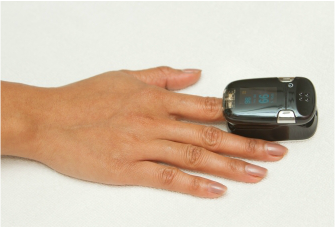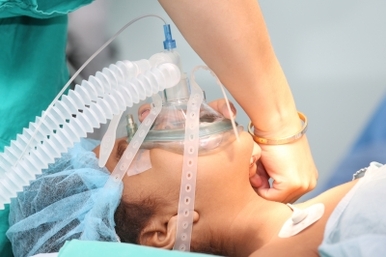
Transnasal Humidified Rapid-Insufflation Ventilatory Exchange (THRIVE): a physiological method of increasing apnoea time in patients with difficult airways
| Anaesthesia and Critical Care |
|
 I remember in the early days of my anaesthetic training (not that long ago) when I first heard about the concept of apnoeic oxygenation. It was in fact our very own John Weeks that pointed me in the direction of NODESAT (Nasal Oxygenation During Efforts to Secure a Tube), and the paper by Drs Weingart and Levitan discussing approaches to reduce the incidence of desaturation occurring during intubation of critically ill patients (1). Preoxygenation/denitrogenation was one of the first things taught to us when we started to learn about rapid sequence induction of anaesthesia (RSI), giving that extra time to secure an airway before the tone of the sats probe started its precipitous decline, but this was the only real technique used to extend this time. But then I read this paper that describes how your can maintain oxygen saturations for (potentially) ridiculous lengths of time without the need to ventilate patients. Mind blown. Unfortunately, nothing really happened about it. I have still yet to see the techniques described used by other clinicians I was working with, and I was certainly a little too junior to start trying some maverick techniques. RSI was thio, sux, tube. As such, it was a rather pleasant surprise to spot this paper being mentioned on Twitter recently: Transnasal Humidified Rapid-Insufflation Ventilatory Exchange (THRIVE). Indeed it is a pretty prominent anaesthetic journal (in the form of Anaesthesia that) has published it: Transnasal Humidified Rapid-Insufflation Ventilatory Exchange (THRIVE): a physiological method of increasing apnoea time in patients with difficult airways
0 Comments
 You could say that we might have a bit of a thing for nitrous oxide here at Rapid Sequence. We've looked it a few times before (Nitrous & Nausea, No Place For Nitrous Anymore) and once again we’re back for some more analysis. I suppose this may reflect the fact that nitrous is one of those aspects of anaesthesia that is a bit of a Marmite, polarising anaesthetists over its benefits vs lethality and thus providing ample fodder for discussion (occasionally evidence based). Today’s blog looks at what had the potential to be a pretty big milestone in nitrous’ long illustrious history; the ENIGMA II trial. We got a little bit excited about these results a few months ago after the authors released a little teaser trailer, but now the results are finally here in full (actually published in August but FRCA exams etc etc). This was the highly anticipated sequel to the somewhat flawed (but interesting) initial ENIGMA trial that raised questions about the link between nitrous and post-op cardiovascular events. Would this add more nails to nitrous’ coffin lid or would it breathe new life into this veteran anaesthetic drug? If you haven't read the article yet, check it out here: The Lancet; The Safety of Addition of Nitrous Oxide to General Anaesthesia in At-Risk Having Major Non-Cardiac Surgery |
The BlogA collection of our most recent posts on articles, guidelines and interesting thoughts. Archives
February 2022
Categories
All
|